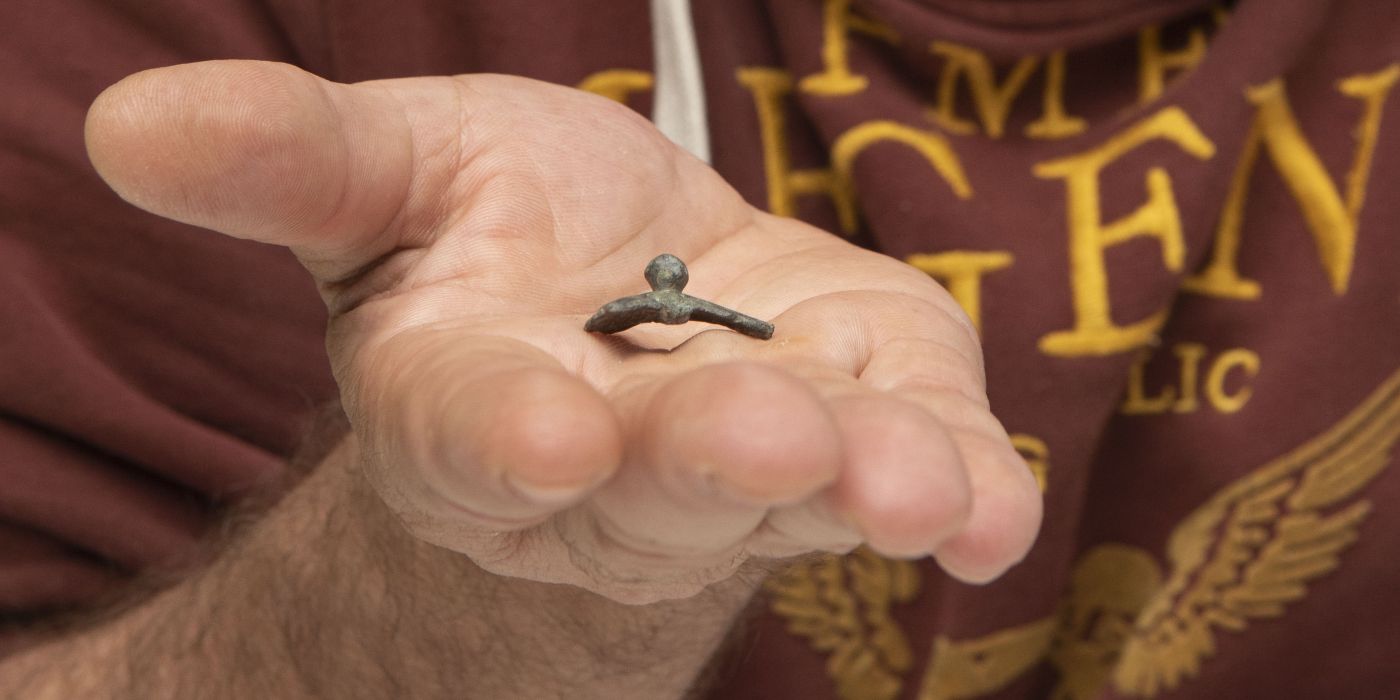A chance find by an amateur metal detectorist has added to a long-running mystery of archaeology, as a fragment of an Ancient Roman dodecahedron has been found in the small town of Kortessem, in Belgium.
The piece, originally part of a dodecahedron measuring 5-6 centimeters (2–2.36 inches) in size, shows signs of having been repaired in the past, with local archaeologists at the Flanders Heritage Agency suggesting that it may have been broken in some kind of ancient ritual.
The fragment of dodecahedron. Image credit: Onroerend Erfgoed
Roman dodecahedra are something of a puzzle: more than 100 such artifacts have been found throughout Europe over the past few centuries, each of them meticulously cast in these perfect 12-sided polyhedra. Each face of the bronze dodecahedra has a small hole through the center, though no hole is the same size as another, and each vertex is decorated with a tiny bauble – though apart from that, the little doodads seem to have no distinctive markings at all.
We can infer that they must have been important, at least to some of their owners, since several have been found among coin hoards and – the new example notwithstanding – hardly any show signs of the kind of wear and tear you might expect over nearly two millennia of history.
And yet the simple fact is that nobody knows what Roman dodecahedra were actually used for. In fact, if it wasn’t for the fact that hundreds of them have been discovered, you’d never know they existed at all, since no record of them has ever been found in contemporary art or writing.
That hasn’t stopped people from theorizing. Perhaps the mysterious little objects were used as rangefinders or angle measurers, people have suggested, or maybe the Romans used them for astronomical predictions to aid in agriculture. Since the advent of YouTube, the idea that the dodecahedra were used as knitting aids has proved particularly popular – but since even knitting needles aren’t known in the historical record until a good few centuries later, that hypothesis is likely not true.
Instead, archaeologists at the Flanders Heritage Agency favor a more esoteric explanation. “There is increasing evidence that dodecahedrons may not have been practical objects, such as measuring instruments,” the statement says. “The known specimens are too different in dimensions and details for that.”
“Their significance should probably be sought in the magico-religious sphere,” it continues. “This may explain why a significant number of dodecahedrons are linked to burial finds.”
To scale. Image credit: Kris Vandevorst/Onroerend Erfgoed
The discovery isn’t just notable for its mystery – it’s also a surprisingly rare find, being only the third dodecahedron found in Belgium. Others have been found as far afield as Ireland, Britain, France, the Netherlands, and Germany – all places where local Celtic civilizations held sway. And yet, weirdly, despite being known as Roman dodecahedra, these little relics have never actually been found in the areas around the Mediterranean Sea, where the ancient Empire began.
With the newly found Platonic solid putting the tiny Kortessem on the map, the Flanders Heritage Agency intends to work together with the detectorist to monitor the area for more archaeological finds in the future. As older and newer discoveries turn up, the hope is that the site’s 2,000-year-long history will one day be fully unearthed.
Source Link: Rare Discovery Of Roman Dodecahedron Fragment Adds To Archaeological Mystery
